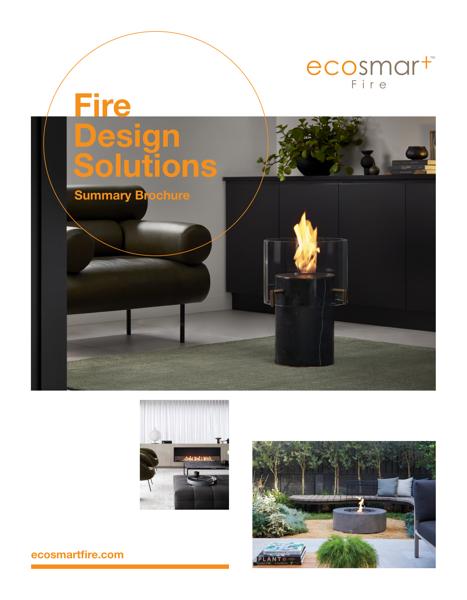Loading image...


Create an instant talking point
Because bioethanol is clean-burning, EcoSmart Fire models do not need a chimney or a flue, or a utility connection – offering the ultimate in design simplicity and flexibility.
Whether you're creating a custom fireplace feature, renovating an existing fireplace, or looking for an out-of-the-box solution, we have an ethanol fireplace to suit your needs.
You May Also Like
Learn More
Ethanol Fireplaces
Ventless Fireplaces
FAQ's
What is bioethanol fuel made from?
Bioethanol fuel is made from plant sugars, particularly sugarcane, through fermentation and distillation processes. This renewable, plant-based fuel source is produced from agricultural by-products, creating a sustainable and carbon-neutral energy solution. The clean-burning bioethanol produces only heat, steam, and minimal carbon dioxide during combustion.
Are bioethanol fireplaces safe for homes with children or pets?
Like all fireplace solutions, bioethanol fireplaces can be safe with proper precautions around children and pets. EcoSmart Fire recommends installing certified fire screens, maintaining safe distances from hot surfaces, and never leaving the fire unattended. Children should always be supervised, and pets kept away from the unit during operation due to high surface temperatures.
Can ventless fireplaces cause moisture problems?
Yes, ventless ethanol fireplaces can cause moisture problems if used in poorly ventilated spaces. Ethanol combustion produces water vapour, which requires adequate room ventilation to prevent condensation and indoor air quality issues. Ensure proper air circulation and follow minimum room size requirements.
How long does it take to assemble an ethanol fireplace?
There is virtually no assembly. Our freestanding fireplaces and fireplace grates are designed to be placed into the desired location, secured into position, and operated immediately. Our fireplace inserts are designed to slot into place, secured and built around your preferred finish – again a quick and easy installation – so your builder or interior designer will love you!The longest part of the setup process is trying to figure out where you want to place it – be sure it complies with our clearance requirements, particularly with regard to moving objects like curtains, tree branches and so forth.
Can I extinguish the ethanol fireplace before the fuel has burnt?
Yes, you can turn your EcoSmart Fire burner off at any given time, even if there is ethanol still left in the burner. It is recommended however, that you leave it to burn until it completely runs out. The shut-off mechanism is there for security and safety for those times when you need to leave the house, as it is not safe to leave a fire unattended. Please wait 60 minutes before relighting the ethanol after extinguishing it to let the ethanol cool. Built-up vapours may cause a strong, initial ignition if the ethanol has not cooled long enough.For all other brands, refer to the manufacturer's instructions.
How long will my ethanol fireplace burn?
Burn times for our ethanol fireplaces vary based on flame size and fuel capacity of the burner. EcoSmart Fire’s ethanol fireplaces will burn between 8-13 hours when full.
Can ventless fireplaces be used as a primary heat source?
Ventless bioethanol fireplaces are classified as decorative appliances intended for occasional use. They're designed to create ambience rather than serve as a primary heat source, and regulations specifically prohibit their use for continuous operation or home heating.
Can I convert my existing fireplace to bioethanol?
Yes, you can easily convert your existing fireplace to bioethanol using EcoSmart's VB2 burner, Heritage Grates, or Fireplace Grates. These products transform traditional wood-burning fireplaces into clean-burning bioethanol fires within minutes. Just ensure any gas connections are professionally disconnected first for safety.
Is the ethanol fireplace heat output similar to a gas heater?
Burning bioethanol is similar to gas, but the room doesn't dry out as it does with gas - a more gentle, softer heat is created. Heat-wise, it depends on the models being compared. Some of our bioethanol burners output 15,000 BTU and can heat up to 60sqm of living space. Bioethanol is not, however, on an adjustable thermostat. Some may be turned up and down, but you can't control the room temperature in the same way as you do with gas on mains.
Can you cook on a bioethanol fireplace?
No, you cannot cook on a bioethanol fireplace. Bioethanol fireplaces are classified as decorative appliances intended for occasional use only, not for heating or cooking. They're designed to create ambience safely, but lack the proper heat distribution, surface design, and safety features required for food preparation.



























